Choosing the right shower tile can define the entire character of a bathroom. It influences how the space feels, reflects light, and frames your fittings. From textural surfaces to layout innovations, each tile style introduces a different spatial dynamic. Below are ten highly regarded shower tile ideas that reflect current design standards while staying grounded in practical value. These options suit a wide range of interior preferences without falling into trend-driven choices. Each concept has been selected to enhance both visual appeal and long-term design quality.
1. Vertical Stacked Tiles with High Contrast Grout
Vertical stacked tiles introduce architectural precision to your shower space. The grout lines serve as graphic elements, adding rhythm and order. When installed in soft tones with a darker grout, the contrast remains elegant. This layout creates an impression of increased height within enclosed stalls. It works well with frameless glass and matte fittings. The overall result is refined and distinctly modern.
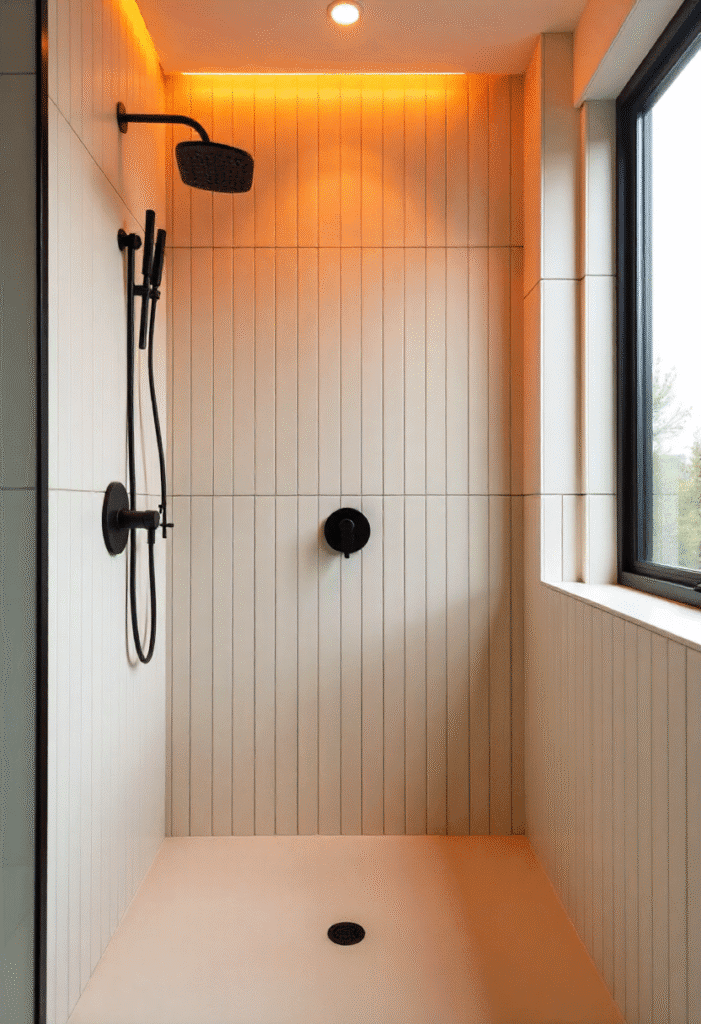
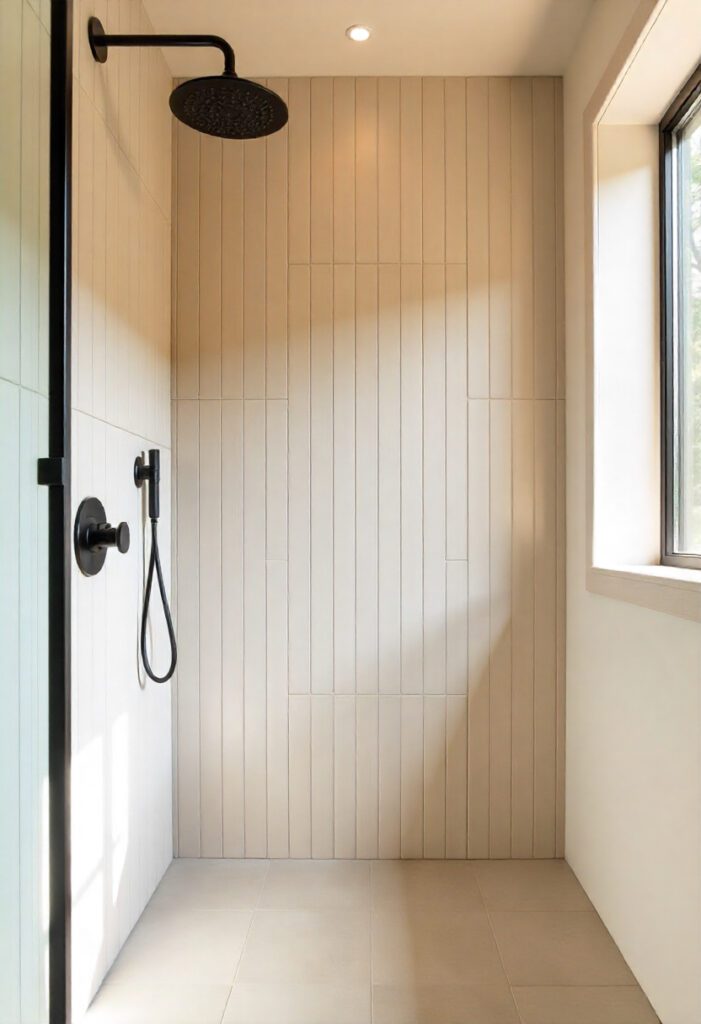
2. Natural Slate Stone Walls
Natural slate tiles add tactile variation and strong visual depth. Their mineral-rich surface captures light in uneven layers, producing a grounded backdrop. This material is often favored for spa-like shower zones. Shades of gray, rust, and charcoal introduce tonal richness without overcomplication. Slate pairs well with brushed fixtures and warm lighting. It remains a trusted option for layered, material-driven bathrooms.
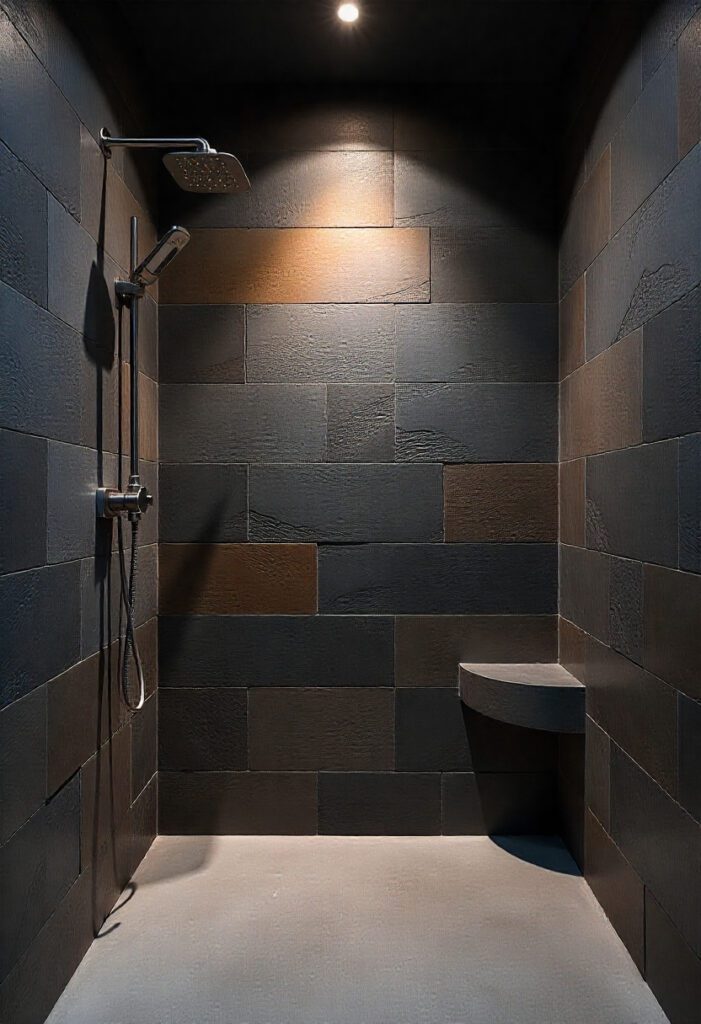
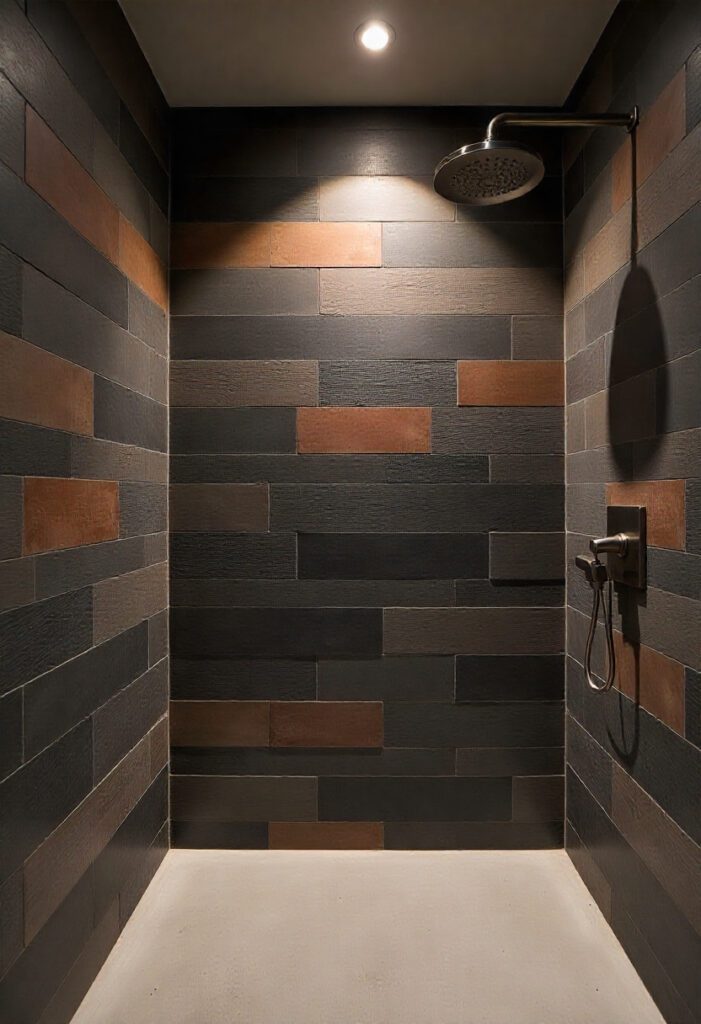
3. Checkerboard Shower in Neutral Tones
A checkerboard tile layout in muted tones can establish subtle balance. Alternating soft beige and off-white creates structure without overwhelming the eye. This configuration brings a traditional pattern into a more modern palette. Framing it behind a shower wall or floor area creates gentle contrast. It looks particularly sharp with gold fixtures and minimal glass panels. The design works across a range of room sizes.
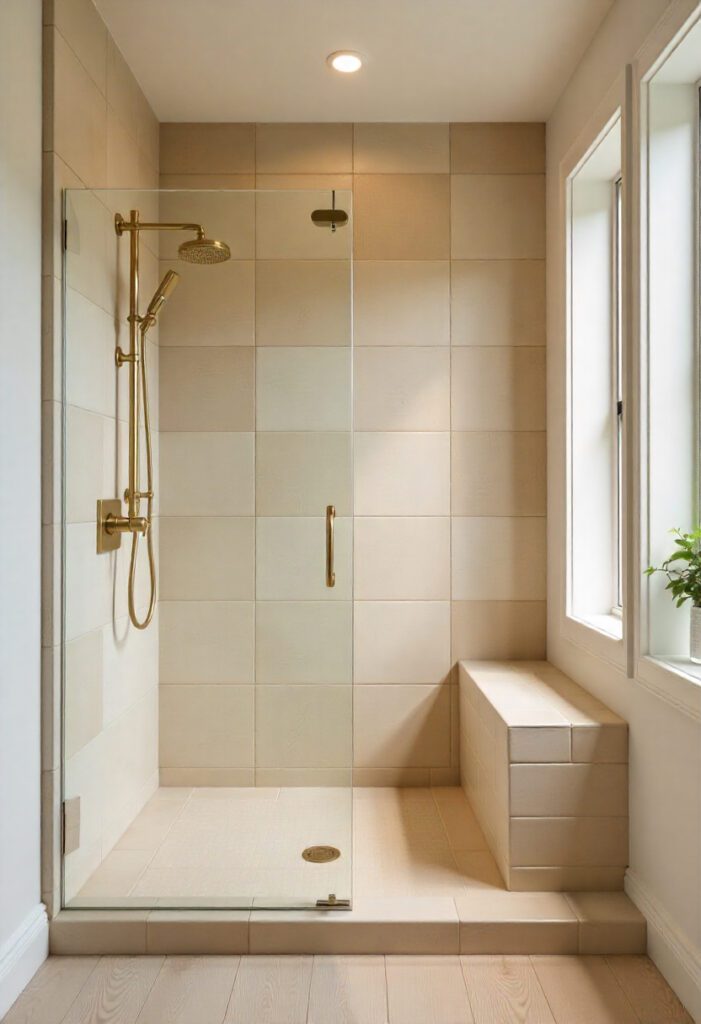
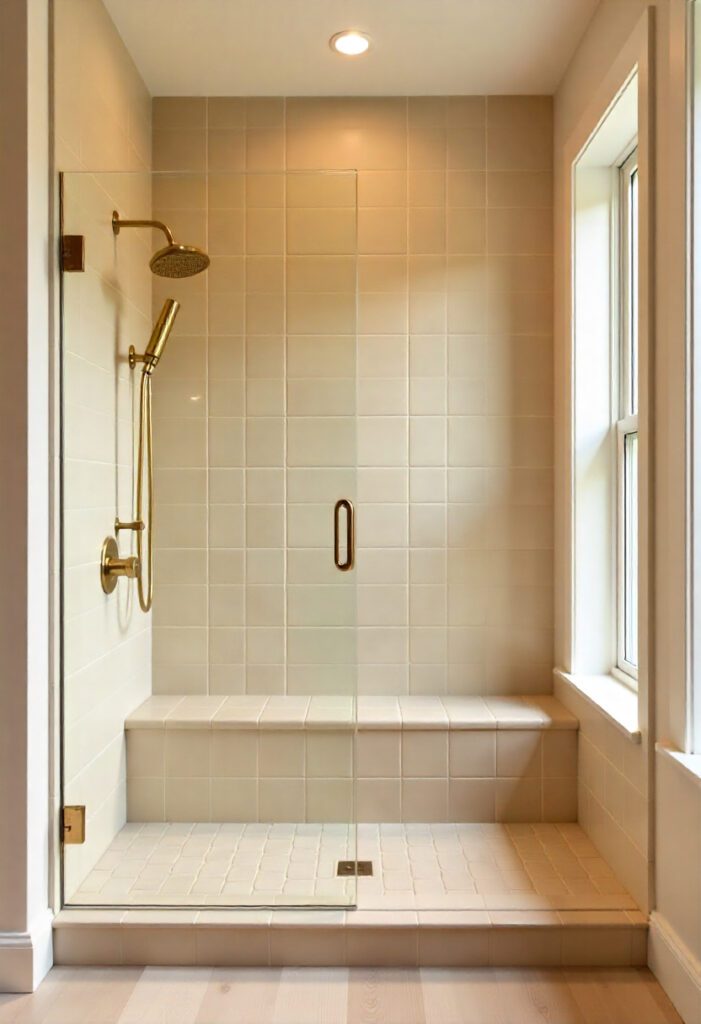
4. Small Hex Tiles from Wall to Floor
Hexagon tiles applied continuously across floor and wall surfaces create immersion. When chosen in matte pastel tones or soft greens, they support a calming atmosphere. This style often appears in compact bathrooms and wet rooms. It eliminates harsh transitions by using one shape throughout. The geometric form introduces quiet patterning without visual weight. Built-in niches and minimal hardware complete the setting. For more bathroom tile designs, click here.
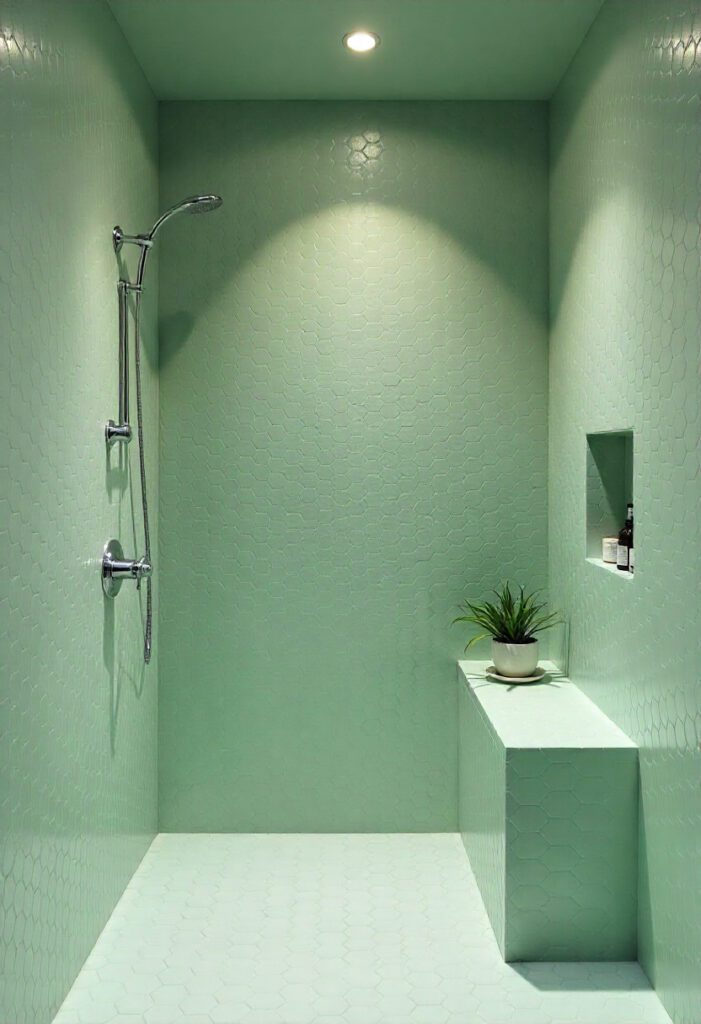
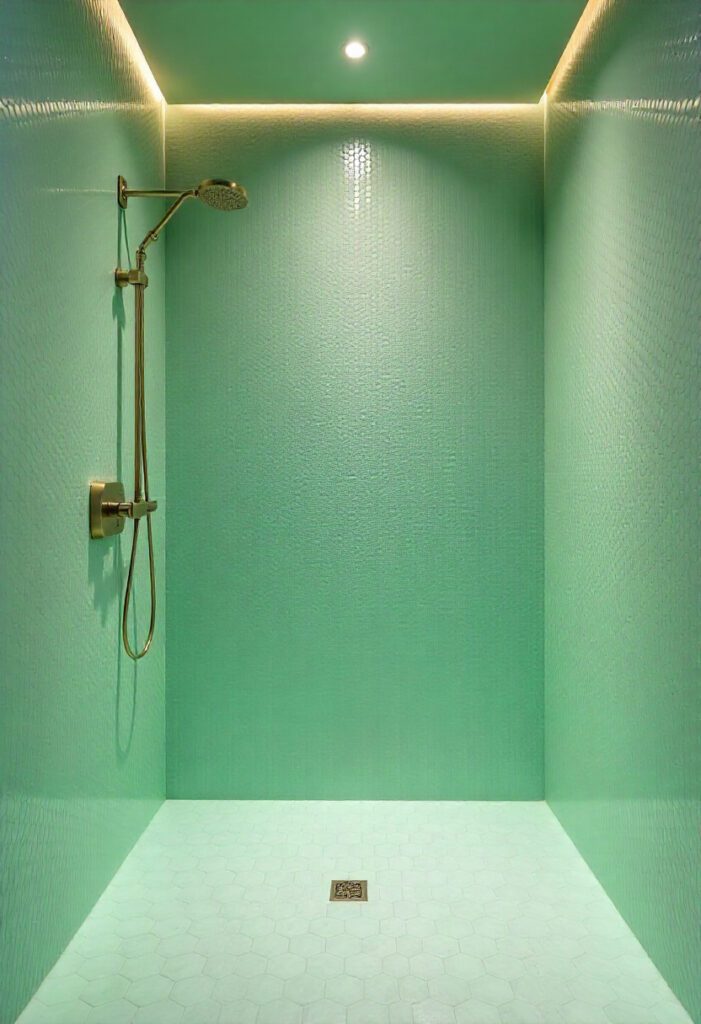
5. Metallic-Touched Shower Wall Accent
Metallic tiles can add discreet shimmer when used selectively. A vertical strip framed within neutral tiles becomes a focal detail. Soft golds or champagne tones catch ambient lighting without reflecting too harshly. This method is frequently used to highlight built-in shelving or bench areas. It complements both polished and honed stone surroundings. The result is measured and upscale.
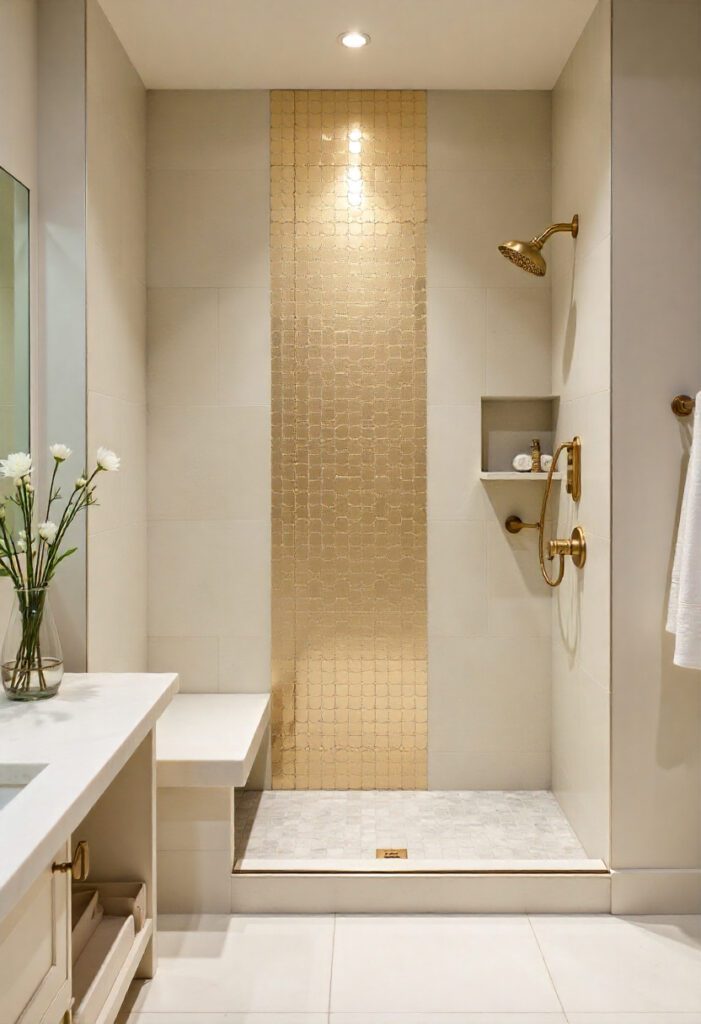
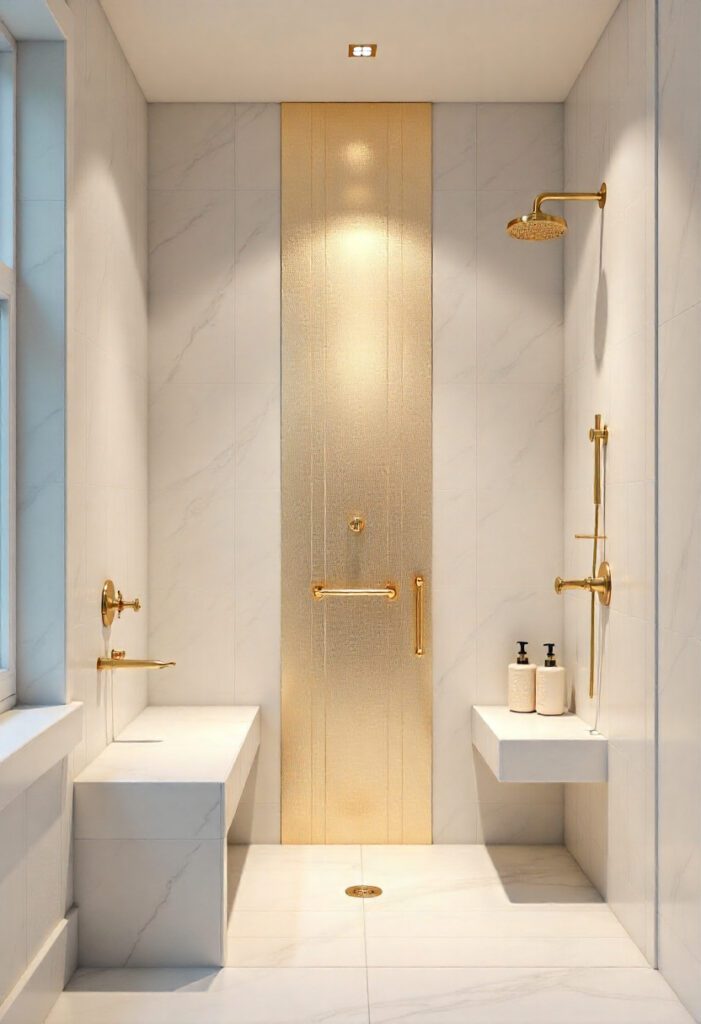
6. Vertical Herringbone Layout in Gloss Finish
The vertical herringbone pattern draws the eye upward while adding movement. Gloss-finished tiles help reflect light evenly across the wall surface. This layout feels dynamic while still being easy to maintain. Pale tones such as soft gray or ivory help maintain clarity. The configuration suits narrow stalls as well as open walk-in spaces. Black or brushed nickel fittings help ground the look.
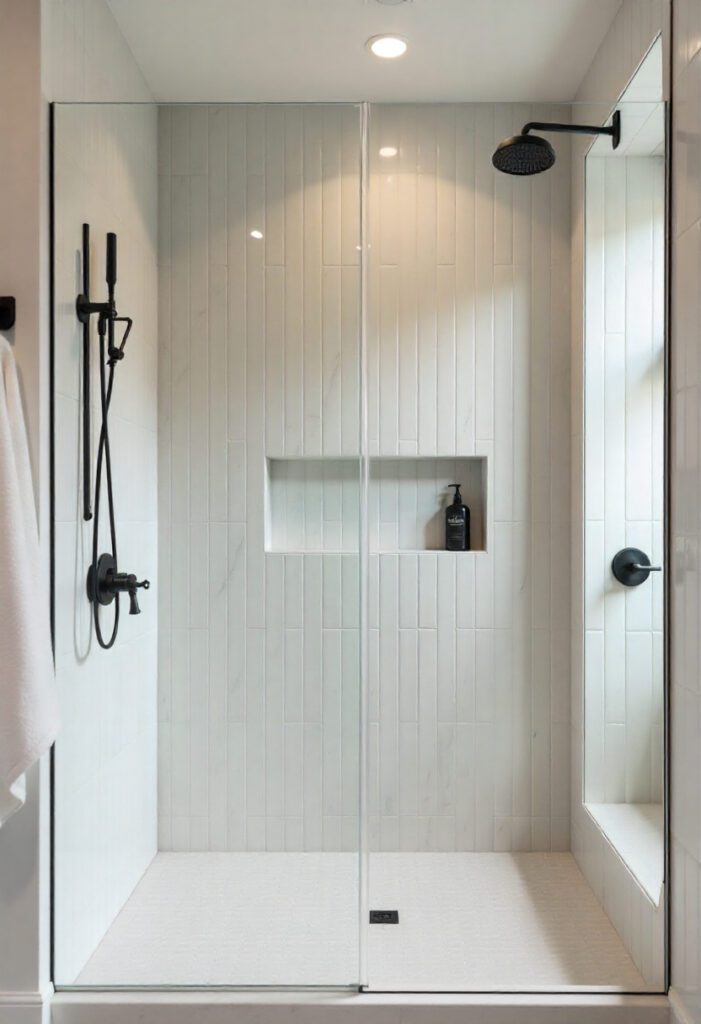
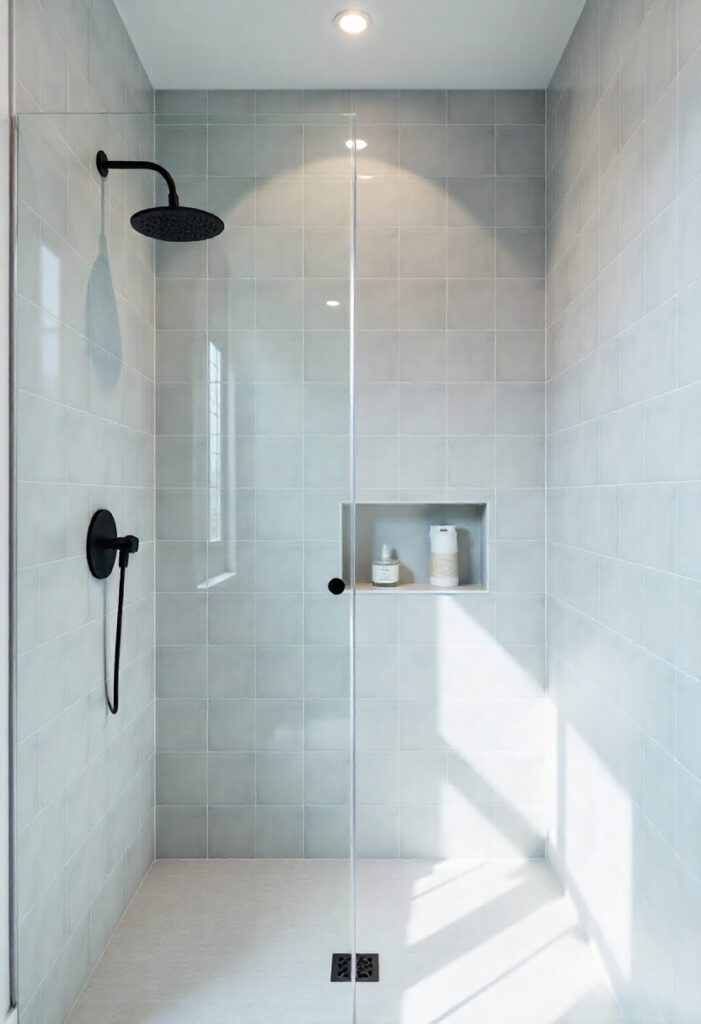
7. Raw Concrete-Look Porcelain Tiles
Concrete-look porcelain tiles offer a clean, contemporary base for bathroom showers. Their soft texture and uniform tone keep the focus on structure and material. This design language fits well in modern bathrooms with streamlined fixtures. It complements built-in benches, glass panels, and architectural lighting. The absence of ornament keeps the space visually quiet. These tiles also offer excellent durability.
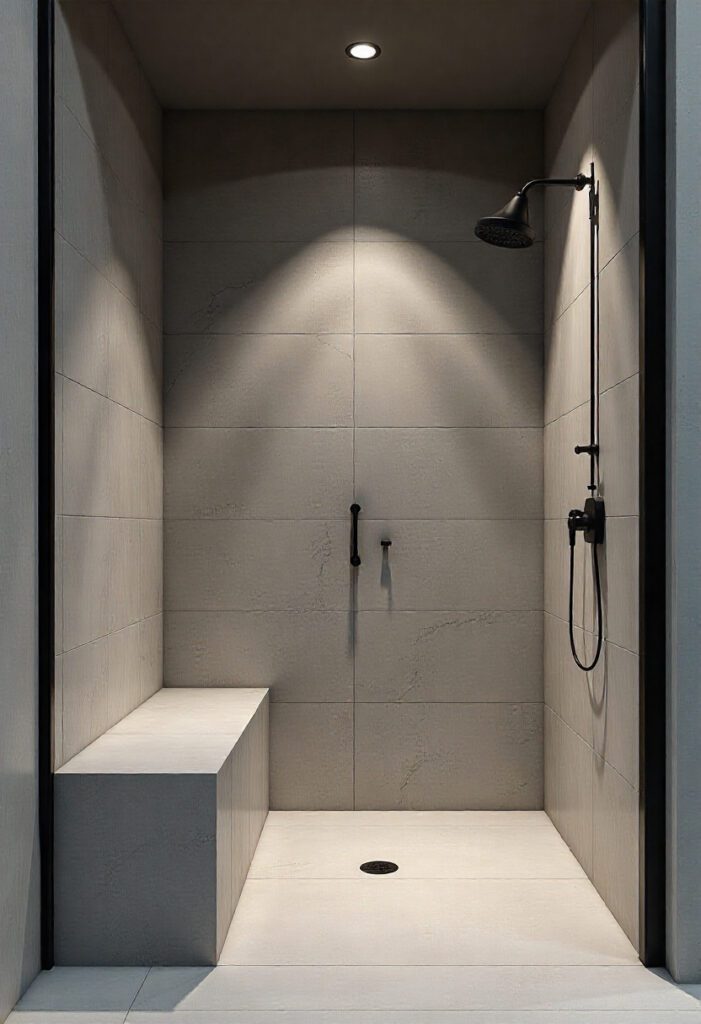
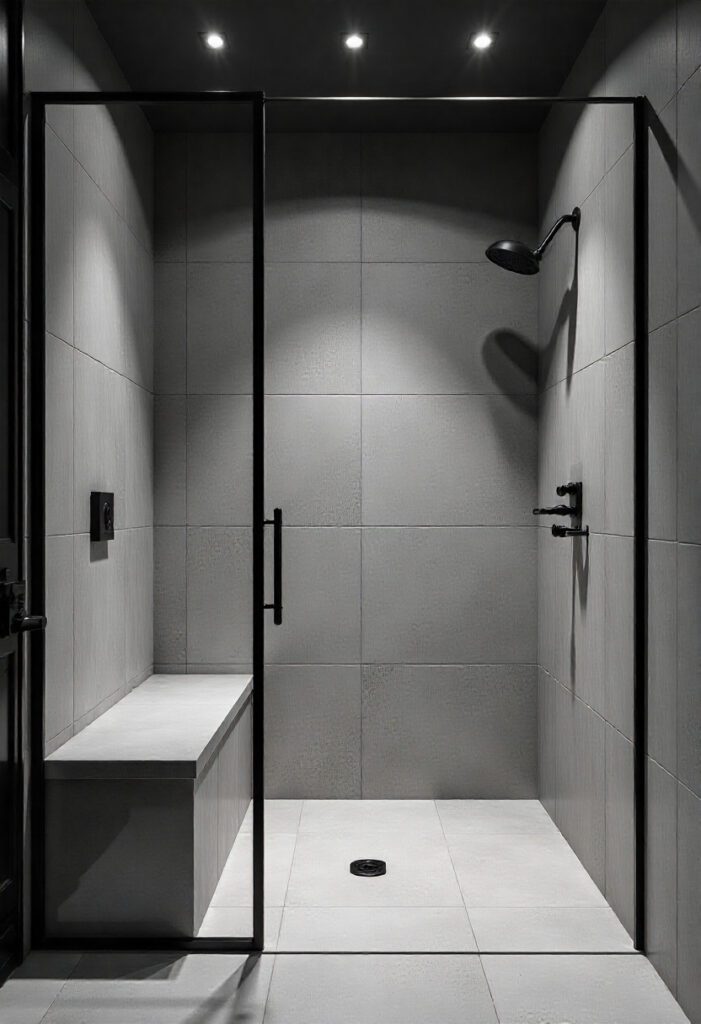
8. Pastel Grid with Square Tiles
Square tiles in soft pastel colors can bring freshness to enclosed shower areas. Colors such as pale pink, powder blue, or soft yellow are arranged in an organized grid. This creates a layout that is both playful and well-ordered. Pairing it with terrazzo floors or brass fixtures introduces tonal variation. The grid format helps maintain sharpness across small tiles. It suits bathrooms that lean toward light and color.
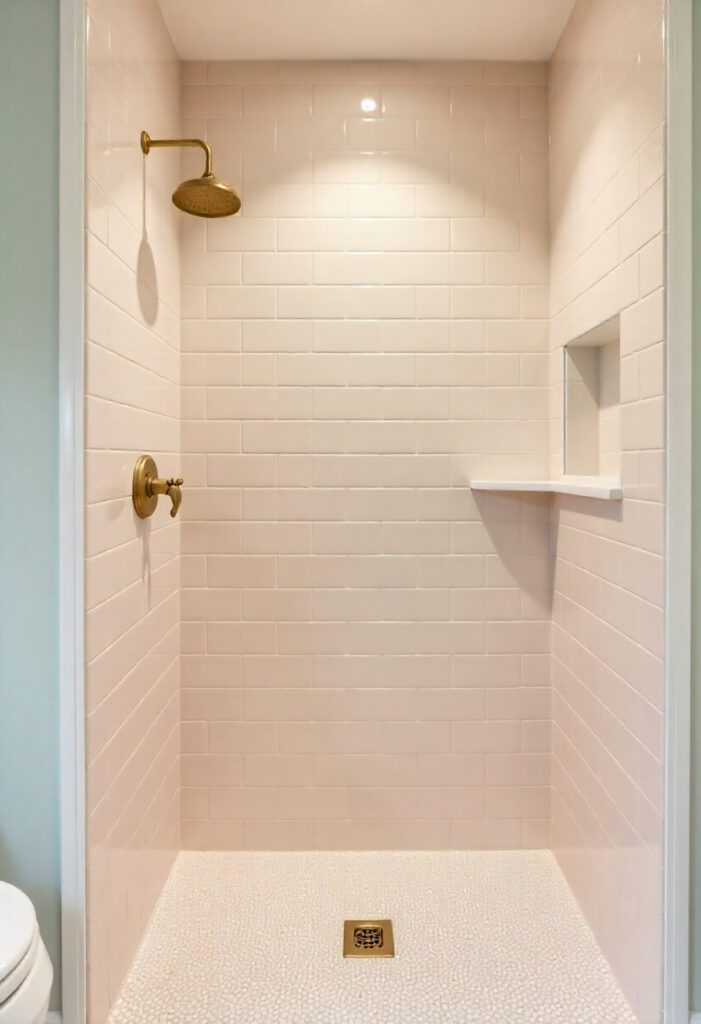
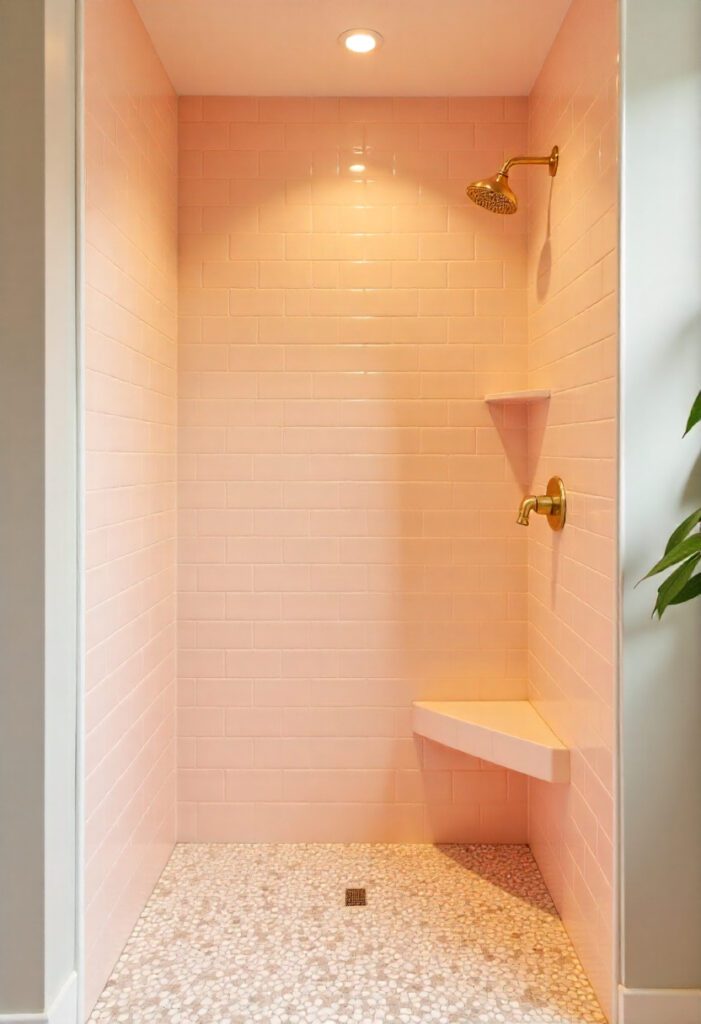
9. Soft Color Vertical Kit-Kat Tiles
Kit-Kat tiles feature a narrow rectangular form that works vertically to elongate walls. When selected in muted tones like sage, clay, or sand, the effect is understated. These tiles offer consistent repetition that enhances spatial flow. Their slim size allows flexibility in curved corners and compact stalls. The subtle profile introduces vertical rhythm without visual noise. This style pairs well with clean-lined hardware.
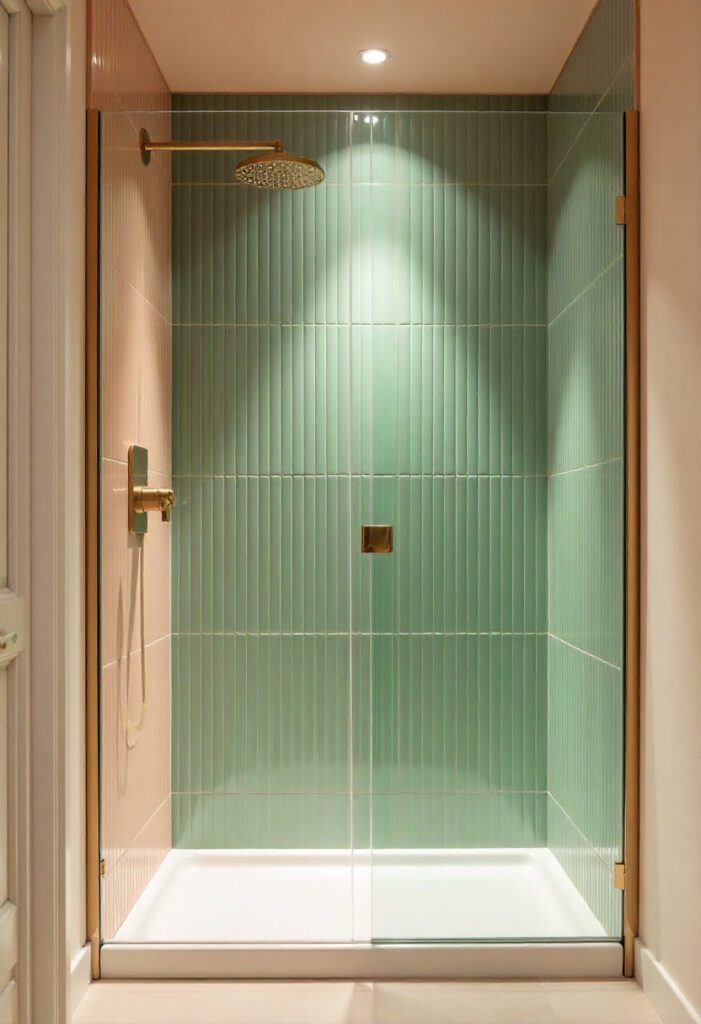
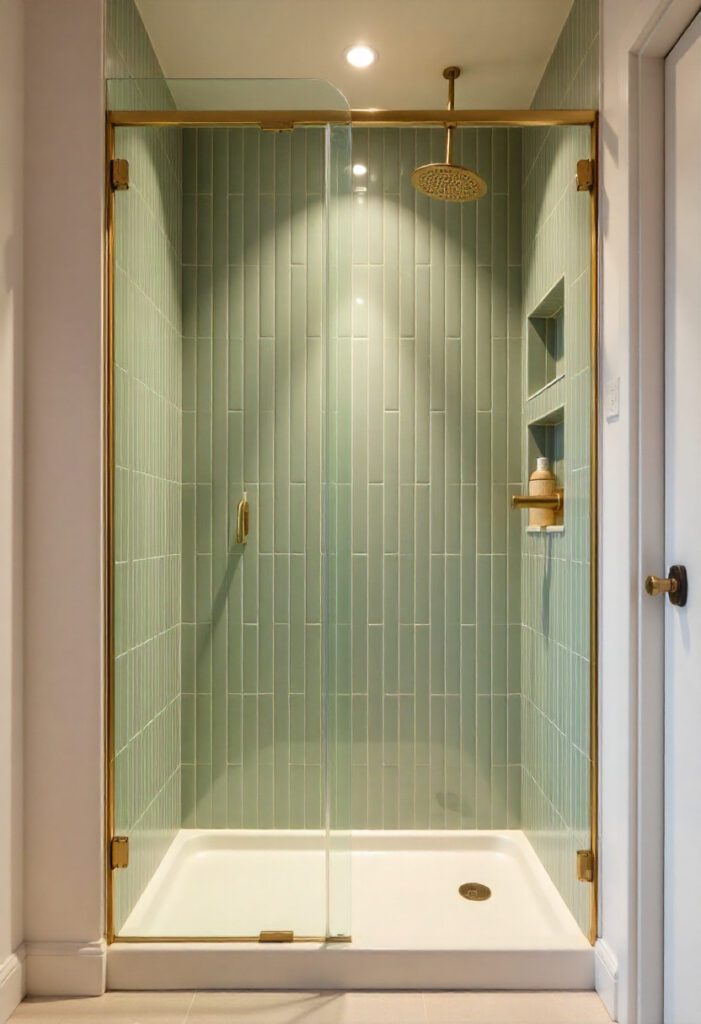
10. Blush Clay Micro Tile Grid
Micro tiles in blush or terracotta hues introduce both density and softness. The small format allows for intricate layout while remaining consistent in appearance. These tiles bring warmth to bathrooms that use pale wood or neutral stone. The grid pattern supports clean transitions across wall zones. Matte finishes help absorb glare in spaces with strong lighting. This look is well suited to modern interiors with depth.
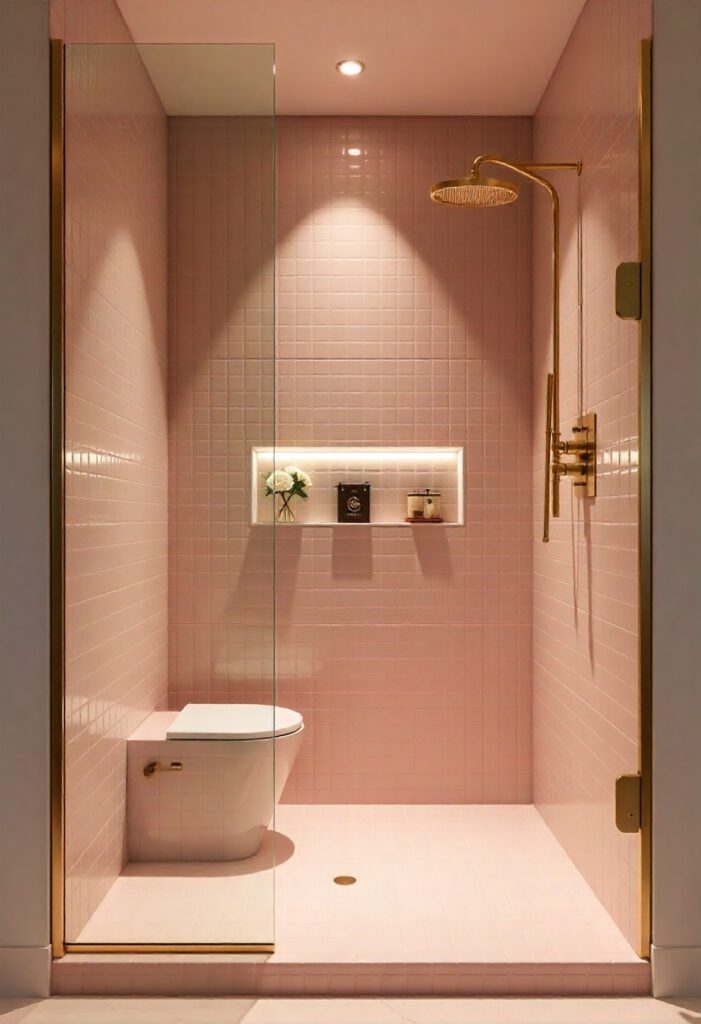
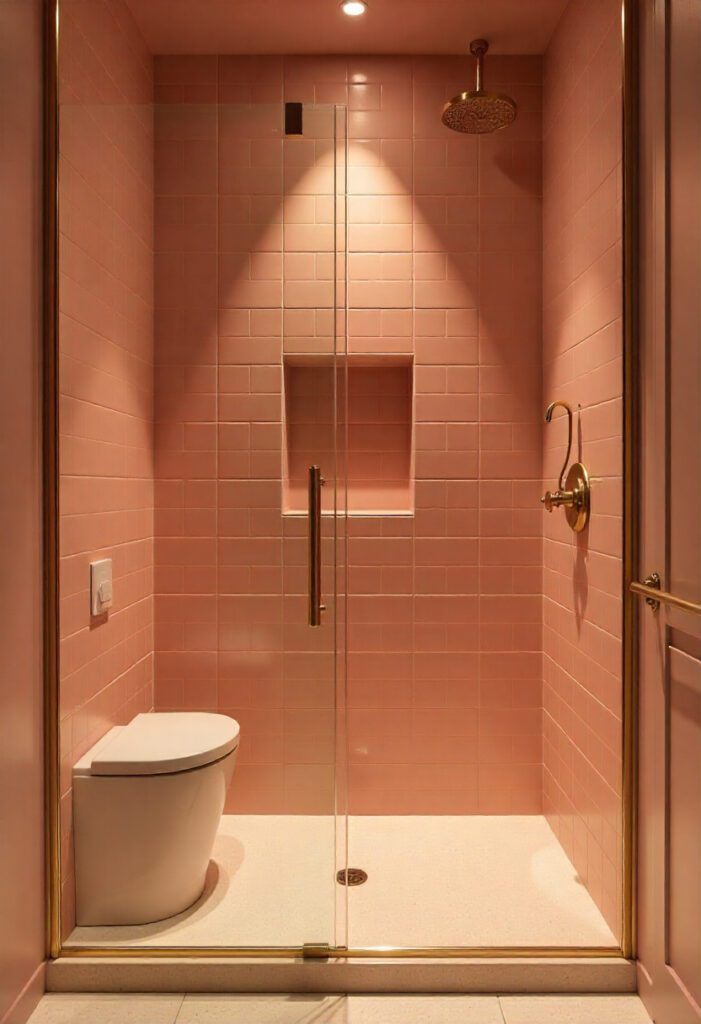
Final Thoughts:
By integrating these thoughtful shower tile ideas, homeowners and designers can build spaces that reflect current design standards without compromising long-term aesthetic value. Each option balances surface appeal with spatial clarity, making the bathroom feel considered, structured, and complete.
